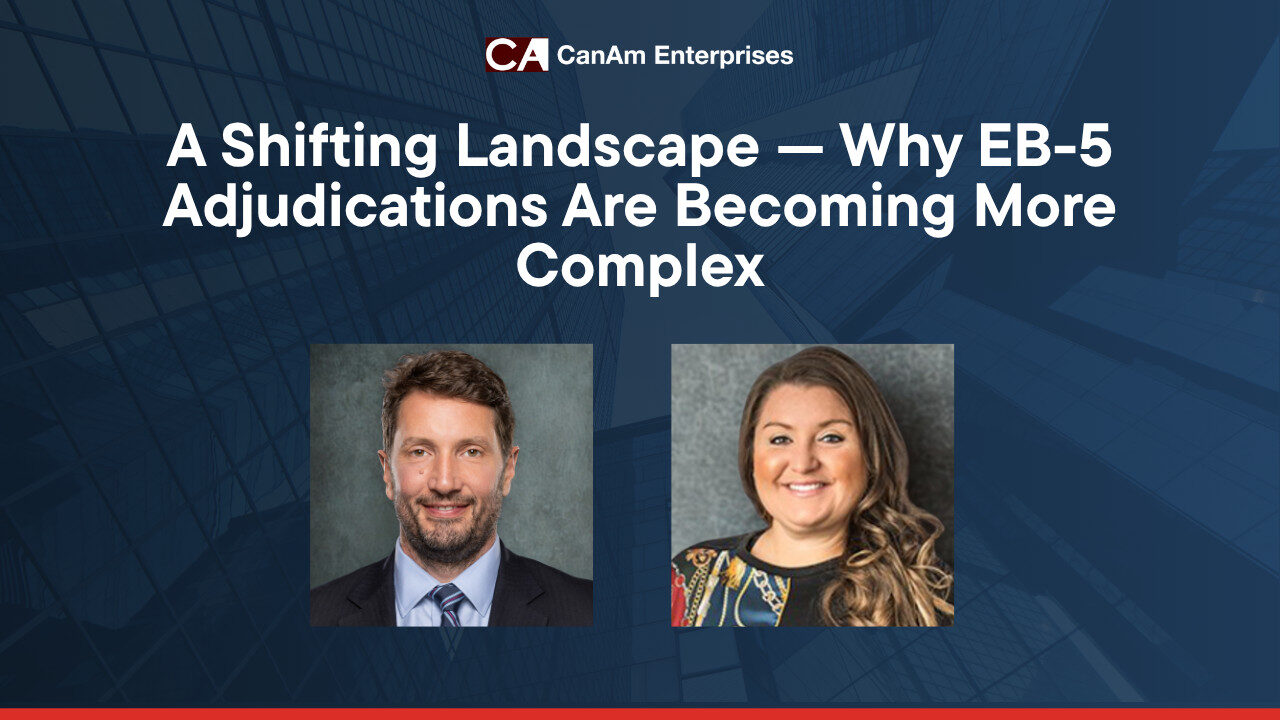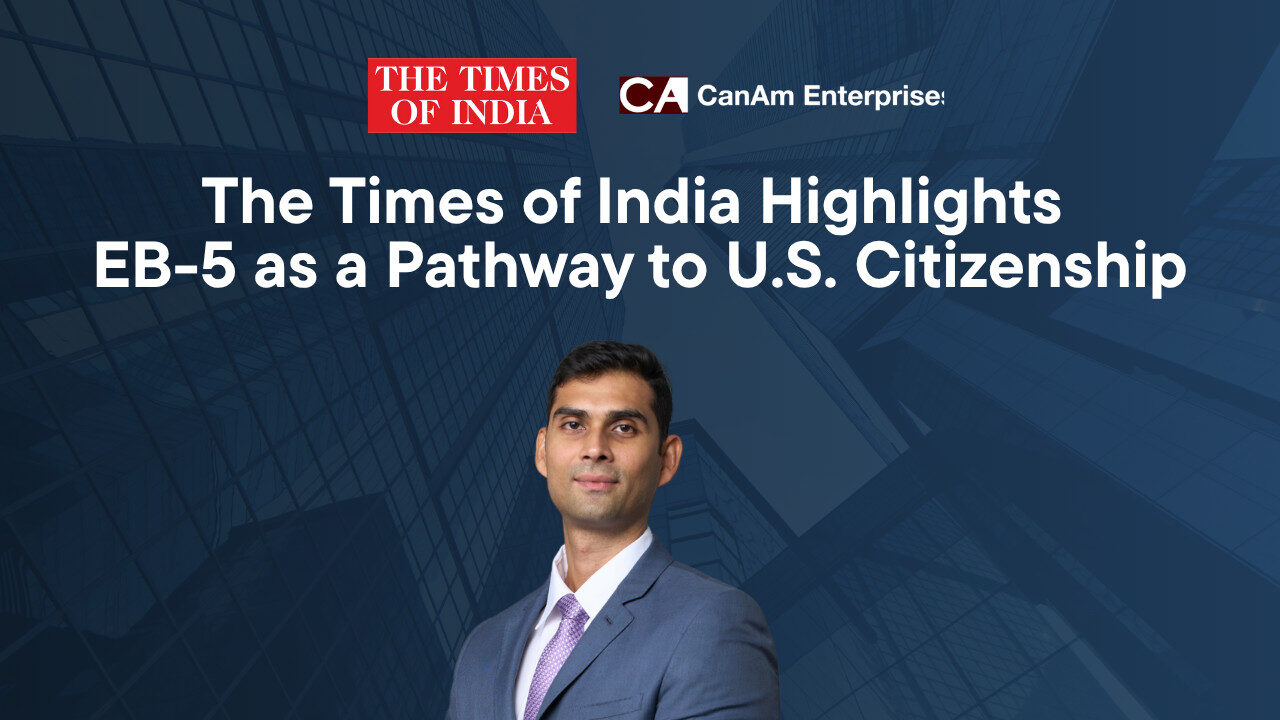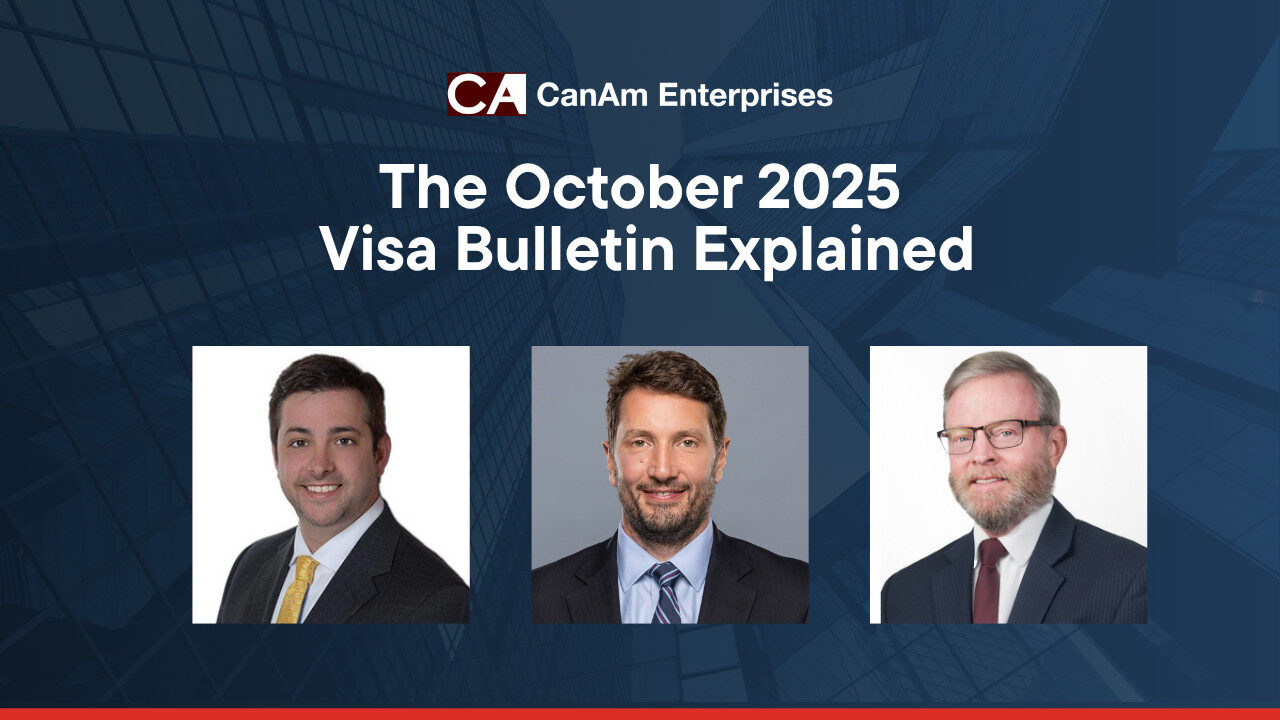From banking to building credit, here’s how EB-5 investors can establish a strong financial foundation after immigrating to the U.S.
Landing Well: Banking, Insurance & Building Your U.S. Financial Team
The moment you step onto U.S. soil as an EB-5 investor, you’re not just starting a new chapter—you’re building a new financial identity. In Part 5 of our CanAm x Navis Wealth series, Paul Fegan outlines practical steps to help EB-5 families establish banking relationships, access credit, secure insurance, and assemble a U.S.-based advisory team.
Catch up on Part 1, Part 2, Part 3, and Part 4
Read the full webinar recap here: Essential EB-5 Investor Guide: Tax, Banking & Asset Protection
Step One: Open a U.S. Bank Account—But Be Prepared
Many new residents are surprised by how difficult it can be to open a U.S. bank account without established credit or income history.
Common challenges:
- Enhanced due diligence for non-citizens
- Documentation requirements (passport, visa, proof of address)
- Limited options without a Social Security Number (SSN) or ITIN
Paul Fegan recommends pre-selecting banks familiar with international clients and leveraging relationships with EB-5 regional centers or law firms to streamline the process.
“The goal isn’t just to open an account—it’s to start building a track record.”
Step Two: Build U.S. Credit—Even Without a Credit Score
In the U.S., your credit score affects everything from home rentals to insurance premiums. EB-5 investors often arrive with substantial assets but no credit history, which can limit access to basic services.
Tips for building credit:
- Apply for a secured credit card with a U.S. bank
- Become an authorized user on a relative or friend’s account
- Make consistent, on-time payments for utilities, phone bills, etc.
- Monitor your credit reports with the three major bureaus (Experian, Equifax, TransUnion)
Over time, these actions create a credit profile that lenders and insurers will trust.
Step Three: Rethink Insurance—It Works Differently in the U.S.
Insurance in the U.S. may look familiar—but functions differently, with wide variation in coverage, premiums, and underwriting.
Consider:
- Health insurance: Understand ACA plans, private options, and the need for immediate coverage
- Life insurance: Many non-citizens face limited options or higher rates
- Property & liability insurance: Required for real estate owners and business operators
“Don’t assume your international policy will translate,” Fegan warns. “Work with U.S.-licensed advisors to protect your assets here.”
Step Four: Build a Cross-Border Financial Team
Successful EB-5 families treat their U.S. arrival as a transition of jurisdiction—not just geography. The most common post-landing mistake? Assuming one advisor can do it all.
Your ideal team should include:
- A U.S.-based CPA experienced in international reporting (FBAR, FATCA, PFIC)
- A financial planner with cross-border expertise
- An immigration attorney (for ongoing status support)
- An estate attorney to revise or add U.S.-compliant documents
Collaboration among these professionals ensures no gaps between strategy, tax, and compliance.
FAQ: Financial Setup for New EB-5 Green Card Holders
Q: Can I use my foreign credit history in the U.S.?
No. U.S. credit scores are based solely on domestic financial behavior. You’ll need to start fresh.
Q: Do I need to file taxes in the first year of residency?
Most likely, yes—especially if you’ve met the substantial presence test or received your green card.
Q: Can I bring funds into the U.S. from abroad right away?
Yes, but speak with your advisor first. There may be currency controls, tax implications, or reporting thresholds to manage.
Conclusion: A Strong Start Sets the Tone
For EB-5 investors, immigrating to the U.S. is about more than paperwork—it’s about building a life. That includes a solid financial foundation that supports your goals and protects your wealth.
As Paul Fegan emphasizes, “Those first 6–12 months are critical. You’re not just setting up bank accounts—you’re building a system that will support your family for decades.”
This wraps up our 5-part series on cross-border financial planning for EB-5 investors.





